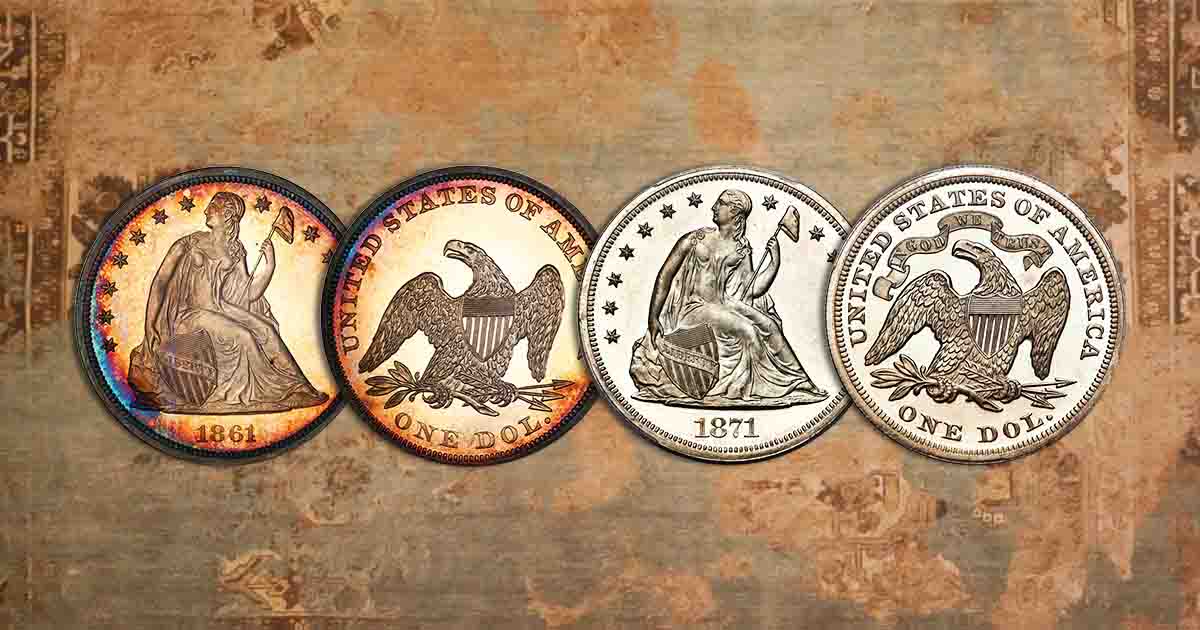
Christian Gobrecht left an enduring legacy in American numismatics as a designer and engraver for the U.S. Mint. Gobrecht’s journey from apprentice to Chief Engraver at the Mint is a testament to his exceptional talent and lasting influence on American coinage, particularly his Seated Liberty designs and engravings.
Christian Gobrecht’s Background
Gobrecht was born in Hanover, Pennsylvania on December 23, 1785. His early life was marked by an apprenticeship in the clockwork trade in Manheim, Pennsylvania. After the clockmaker died, Gobrecht moved to Baltimore, where he continued tinkering with ornamental clock dials and name plates, perfecting his engraving skills.
As an engraver, Gobrecht was self-taught. He also learned die-sinking on his own and crafted type punchers for type founders, in addition to headings for newspapers. Gobrecht engraved bank notes, dies for bookbinders, seals, and calico printer rolls.
Christian Gobrecht moved to Philadelphia in 1811 and began work with the engraving bank note firm Murray, Draper, Fairman, and Company in 1816. He gained attention for his work as a sculptor and engraver, drawing the eye of U.S. Mint Director Robert Patterson.
Gobrecht’s Work for the U.S. Mint
In 1823, Patterson offered Gobrecht the role of assistant director of the Mint. Christian Gobrecht declined this offer but, in December of the same year, sought the position of Chief Engraver following Robert Scot’s passing.
He went as far as asking for the position in a letter to President James Monroe, but William Kneass was given the position instead. When Gobrecht was offered an assistant engraver position for half of the Chief’s earnings ($600 per year instead of $1200), he declined.
In the decade that followed, Gobrecht worked as a third-party contractor. He began supplying numbered and lettered punches and eventually provided the mint with dies. His die work included the Franklin Institute Medal, the Peale’s Museum admission pass, the Charles Carrolton medal, and more.
After William Kneass’s stroke in 1835, Gobrecht accepted a role as Second Engraver for the U.S. Mint. His new role earned the same as the Chief Engraver, a position Kneass held until his death in 1840.
While Kneass retained his role, Christian Gobrecht did the design and engraving work on nearly all dies and patterns, which included the Gobrecht dollars. Gobrecht dollars were minted in small numbers between 1836-1839.
In December of 1840, following William Kneass’s death, Gobrecht was made Chief Engraver of the U.S. Mint.
Gobrecht’s Contributions to American Coinage
The pattern Gobrecht Dollar served as a prototype for the Seated Liberty. Seated Liberty depicts the goddess, Liberty, sitting on a rock with a Liberty pole in her hand and her right hand resting on a striped shield.
Seated Liberty endured for years and became iconic as an essential representation of American coinage and is Christian Gobrecht’s most noteworthy design. Gobrecht also designed the Liberty Head motif, which was used on quarter, half, and gold Eagles as well as the Braided Hair half cent and large cent coins.
Christian Gobrecht’s designs reflected the artistic and stylistic trends of his time, showcasing a blend of neoclassical elements and American iconography.
The significance of Christian Gobrecht’s work with the U.S. Mint extends beyond the title of Chief Engraver. Gobrecht was an artist with a vision and a technical innovator whose passion rocked the landscape of American coinage. His legacy endures in the collective memory of a nation engraved by the artistry and soul of its numismatic heroes.




